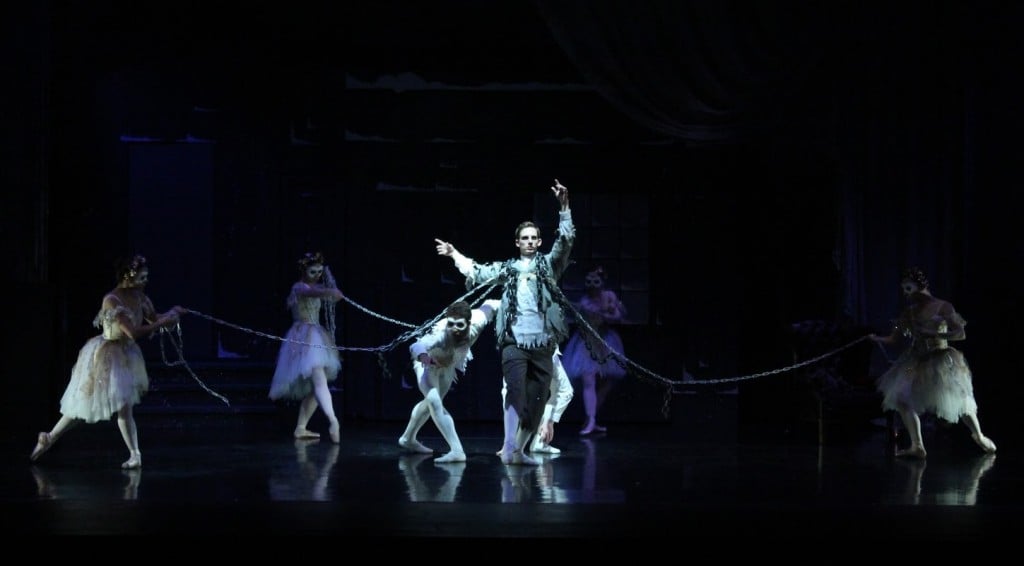Ballet Theatre UK production of "A Christmas Carol"
Tis the season for A Christmas Carol, and in honor of good old Jacob Marley, we thought we'd tackle some of the most common misconceptions about Marley floors for dance studios.
Myth #1 - The name "Marley Floor"
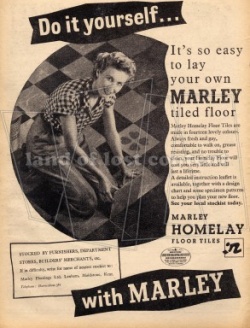
The vinyl top-surface that dancers perform and rehearse on is often referred to as a “Marley Floor." However, actual Marley Floors are no longer available. Marley Flooring was founded in 1948 in Kent, United Kingdom, and it offered a range of floor coverings - including a rolled vinyl floor that ballet dancers like the feel of. The company stopped offering that range of floor in the late seventies, yet the term "Marley Floor" has stuck around, and it is now a general term that refers to any vinyl top surface for dance, including the full range of Rosco Dance Floors.
Myth #2 - Marley floors can be laid directly onto concrete

While it won’t hurt the Marley, not having a sprung surface under your dance surface might hurt you or your dancers. Dancing on unsprung surfaces is hard on the body. It takes a toll on tendons, joints and bones causing fatigue that could lead to stress fractures (also known as shin splints) in as little as 3-4 hours. It's highly recommended to lay the Marley floor on top of a proper sprung floor - such as the Rosco SubFloor.
Myth #3 - Carpet padding and other foams can be used underneath the Marley in place of a sprung floor
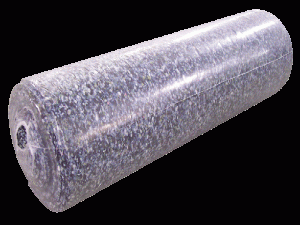
Sprung floors do much more than absorb impact. They provide resilience by spreading the impact of leaps and jumps over a wide area rather than just the area where the foot lands. They also rebound quickly where other materials will compress in a small area and take time to recover, creating soft spots. Keeping your subfloor level is important because areas of your floor that are not properly supported underneath could cause your Marley floor to tear over time.
Myth #4 - Marley floors need rosin
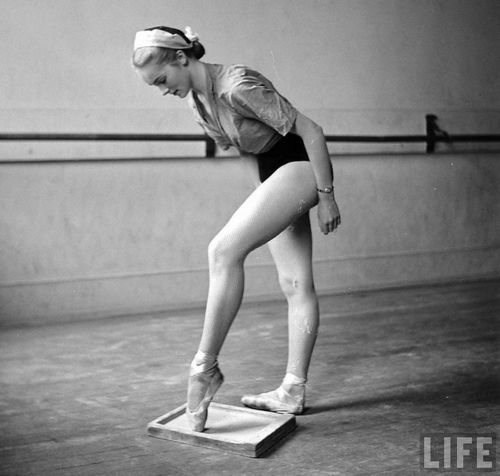
All Rosco dance floors are designed to provide a specific amount of controlled slip without any additional materials, such as rosin. Each floor in the range allows a different amount slip, which should be one of the factors a studio considers when choosing the floor. Using rosin can actually make Marley floors more slippery over time.
Myth #5 - Mopping the Marley floor with cola is an effective way to add grip
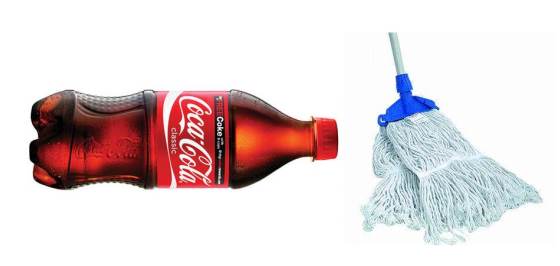
While it is actually true that the sticky cola residue will add some grip to the floor it will also attract dust, dirt and bugs. Cleaning the floor with a neutral pH cleaner, such as Rosco All Purpose Floor Cleaner, will help restore the factory finish and return the floor to its original state of grip/slip.
Myth #6 - Marley floors are only for soft shoes
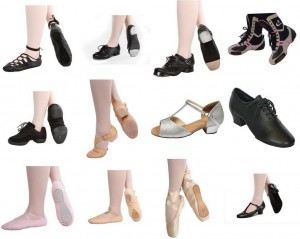 It's true - many of our softer floors (like our original Rosco Dance Floor, which are designed to offer the grip required for pointe, ballet and barefoot styles of dance) are not durable enough for hard-soled dancing, like tap or flamenco. Plus, these softer floors will muffle the sound desired by those styles of dance. However, new technology in vinyl production allows us to offer different flooring surfaces for a variety of disciplines. Floors like Arabesque are dense without a great deal of limited slip - making them an excellent choice for hard shoes like tap, clogging or Irish dance. We're also able to offer all-purpose floors, like our popular Adagio, that work well for multiple disciplines by combining just the right amount of firmness needed for hard-sole durability, yet the right grip characteristics required for softer shoes.
It's true - many of our softer floors (like our original Rosco Dance Floor, which are designed to offer the grip required for pointe, ballet and barefoot styles of dance) are not durable enough for hard-soled dancing, like tap or flamenco. Plus, these softer floors will muffle the sound desired by those styles of dance. However, new technology in vinyl production allows us to offer different flooring surfaces for a variety of disciplines. Floors like Arabesque are dense without a great deal of limited slip - making them an excellent choice for hard shoes like tap, clogging or Irish dance. We're also able to offer all-purpose floors, like our popular Adagio, that work well for multiple disciplines by combining just the right amount of firmness needed for hard-sole durability, yet the right grip characteristics required for softer shoes.
Myth #6 - My favorite, store-bought cleaner is good to clean my Marley

While some household cleaners might do a decent job at cleaning your floor; many of them will do more harm than good. Ammonia based cleaners will make your floor very slippery, while abrasive cleaners may cause irreparable scratching. Rosco manufactures concentrated pH neutral cleaners that not only clean up dirt, dust and body oils but also helps remove stubborn scuff marks.
Myth #7 - Marley floors are difficult to install
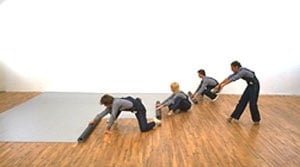 All of Rosco's most popular dance floors can be cut to order, to the nearest whole foot in length. This eliminates waste and results in a lighter, easier-to-handle roll for transport and installation. Permanent installation of our floors should be handled by a professional flooring contractor. However, most customers install their floors themselves with tape, which is much easier. Using Rosco Double-Sided Tape around the perimeter, and the properly colored Vinyl Tape on top of each seam will lock your floor in place for several years - plus, you're able to lift the floor up should you ever need to move your floor to another studio or performance space.
All of Rosco's most popular dance floors can be cut to order, to the nearest whole foot in length. This eliminates waste and results in a lighter, easier-to-handle roll for transport and installation. Permanent installation of our floors should be handled by a professional flooring contractor. However, most customers install their floors themselves with tape, which is much easier. Using Rosco Double-Sided Tape around the perimeter, and the properly colored Vinyl Tape on top of each seam will lock your floor in place for several years - plus, you're able to lift the floor up should you ever need to move your floor to another studio or performance space.
Myth #8 - Marley Floors are expensive
 As Scrooge would say - Bah Humbug! In fact, we're pretty sure the old miser would appreciate the affordability of our floors. Not only are Rosco dance floors a lot more affordable than you think, they're also available anywhere in the world. Contact us to get a quote on a Rosco dance floor for your studio.
As Scrooge would say - Bah Humbug! In fact, we're pretty sure the old miser would appreciate the affordability of our floors. Not only are Rosco dance floors a lot more affordable than you think, they're also available anywhere in the world. Contact us to get a quote on a Rosco dance floor for your studio.

